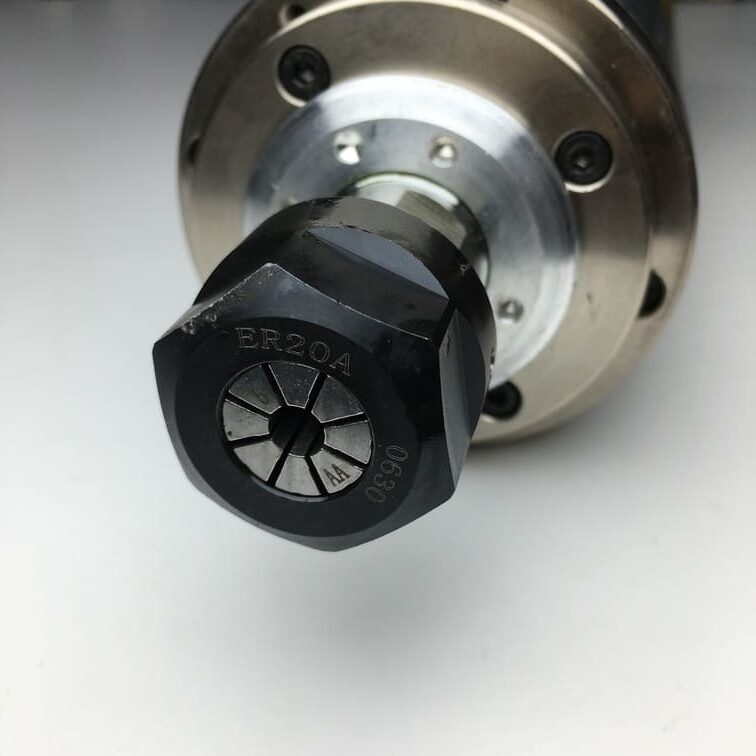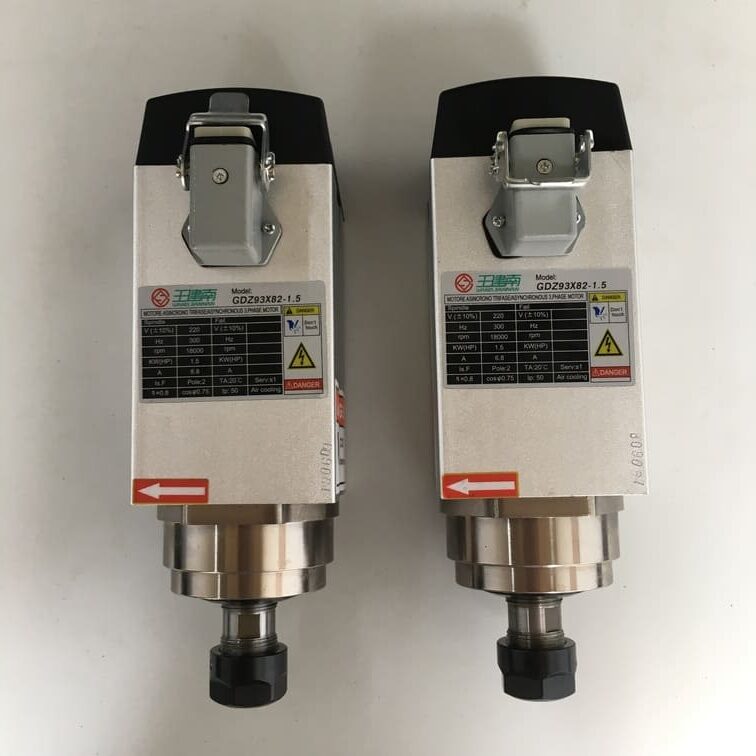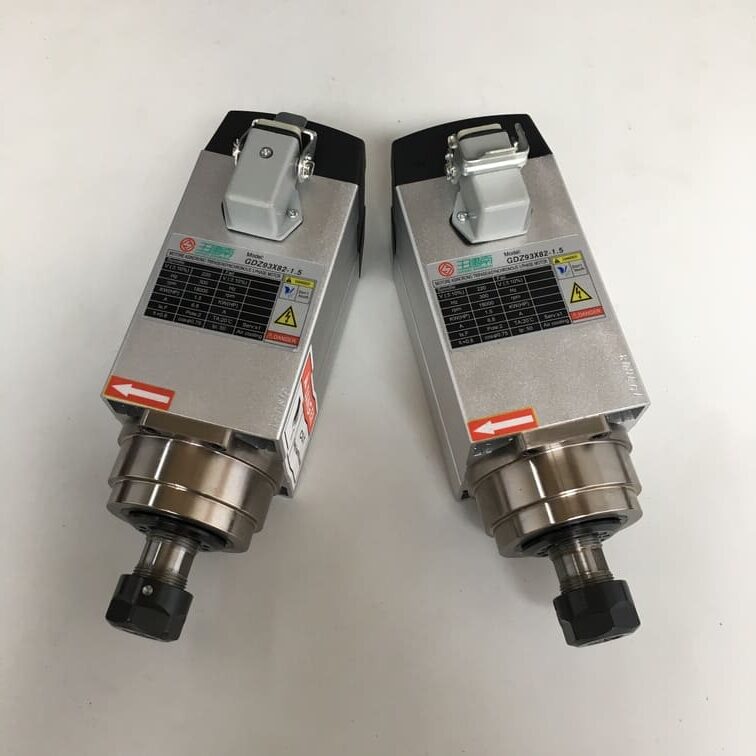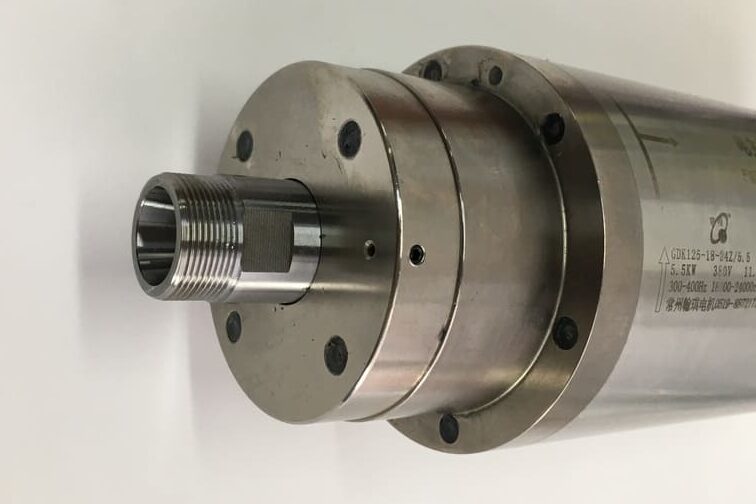When delving into CNC machinery, one of the intriguing questions that arise is whether a die grinder can serve as a CNC spindle, specifically for woodworking. This article will explore this topic in depth, providing you with a comprehensive understanding of CNC spindles, die grinders, and their applications in CNC machines. Whether you’re a hobbyist looking to save costs or a professional seeking alternatives, this guide is designed to help you make an informed decision.
Introduction
CNC (Computer Numerical Control) spindles are critical components in machining, guiding and controlling the cutting tools for precision work. However, with the cost of dedicated CNC spindles sometimes being prohibitive, many enthusiasts and professionals wonder if a die grinder could serve as a suitable substitute, particularly for woodworking projects. This article delves into the potential of using a die grinder as a CNC spindle, discussing its benefits, limitations, and the modifications required for such an adaptation.

Definition and Role of a CNC Spindle in Woodworking
CNC spindles are vital for precise and efficient cutting, shaping, and engraving in woodworking. They are designed to handle various cutting tools and operate at high speeds with minimal vibration, ensuring smooth and accurate cuts. A CNC spindle typically consists of a motor and a collet or chuck that holds the cutting tool, providing the necessary rotational power and stability for intricate woodworking tasks.
What is a Die Grinder and How is it Used?
A die grinder is a versatile hand tool used for grinding, polishing, and cutting various materials. It typically features a rotating spindle and can accommodate a range of attachments and bits, making it suitable for detailed work in metal, plastic, and wood. Die grinders are common in metalworking for tasks like deburring and smoothing, but their application in CNC machinery is less conventional.
Technical Specifications for Optimal Woodworking
A CNC spindle’s performance is often judged by its RPM (Revolutions Per Minute), power output, and stability. For woodworking, spindles usually operate between 6,000 and 24,000 RPM, depending on the material and type of cut. High RPM is essential for clean cuts and preventing burning or chipping of wood. Additionally, spindles are designed to minimize vibration, which is crucial for maintaining precision in detailed projects.
Pros and Cons: CNC Spindle Versus Die Grinder
When choosing between a CNC spindle and a die grinder for woodworking, several factors come into play. CNC spindles are engineered for high-speed, high-precision work and are built to handle the demands of continuous operation. On the other hand, while die grinders are cost-effective and versatile, they may lack the performance and stability required for complex woodworking tasks.
Pros and Cons of Die Grinders
- Pros:
- Cost-Effective: Die grinders are generally less expensive than dedicated CNC spindles.
- Versatility: They can be used with a wide variety of attachments for different tasks.
- Cons:
- Lower RPM: Die grinders may not achieve the high RPMs required for optimal woodworking.
- Stability Issues: They may not offer the same level of stability and precision as CNC spindles.
Feasibility of Using Die Grinders in CNC Machines
Using a die grinder as a CNC spindle involves several considerations. While it is feasible to adapt a die grinder for CNC use, it requires modifications to accommodate the tool’s different form factor and performance characteristics. Key factors include the die grinder’s RPM range, stability, and how well it integrates with the CNC machine’s control systems.
Necessary Modifications for Integration
Adapting a die grinder for CNC use typically involves custom mounting solutions and possibly modifying the grinder itself to fit the CNC spindle holder. Additionally, you may need to adjust the CNC machine’s settings to account for the different performance characteristics of the die grinder.
Current Market Trends in CNC Spindle Technology
The CNC spindle market is evolving rapidly, with trends leaning towards higher efficiency, greater precision, and advanced materials. Manufacturers are developing spindles that offer improved cooling systems, higher power outputs, and enhanced vibration control. This evolution aims to meet the increasing demands for precision in various applications, including woodworking.
Future Predictions and Innovations in Spindle Design
Looking ahead, we can expect continued advancements in CNC spindle technology. Innovations may include the integration of smart technology for real-time performance monitoring and adjustments, further improvements in energy efficiency, and the development of more compact and lightweight spindles without compromising performance.
Safety Precautions and Best Practices
When modifying a CNC machine to use a die grinder, safety is paramount. Ensure that all modifications are securely implemented, and verify that the die grinder operates correctly under CNC conditions. Regularly inspect the machine for any signs of wear or instability, and follow best practices for machine maintenance and operation.
Longevity and Durability in Woodworking Applications
Durability is a crucial consideration when using any tool for woodworking. CNC spindles are generally designed for long-term use, with robust construction and high-quality components. Die grinders, however, may not be as durable when subjected to the continuous operation and high demands of CNC woodworking tasks.
Initial Setup Costs Compared to Long-Term Savings
While the initial cost of a die grinder is significantly lower than a dedicated CNC spindle, the long-term savings may not be as substantial when factoring in potential modifications and the need for additional maintenance. A dedicated CNC spindle, though more expensive upfront, can offer greater reliability and performance over time.
When to Choose a Die Grinder Over a Traditional CNC Spindle
Choosing a die grinder over a CNC spindle may be suitable for budget-conscious hobbyists or those experimenting with CNC technology. However, for professional applications requiring precision and reliability, investing in a dedicated CNC spindle is generally advisable.

Conclusion
In conclusion, while it is possible to use a die grinder as a CNC spindle for woodworking, it involves several trade-offs and modifications. A die grinder can be a cost-effective solution for certain applications, but it may not match the performance and precision of a dedicated CNC spindle. Evaluating your specific needs, budget, and the scope of your projects will help you determine the best option for your CNC setup.
Summary of Key Points
- CNC spindles are designed for high precision and stability, ideal for woodworking.
- Die grinders are versatile and cost-effective but may lack the necessary performance for demanding CNC tasks.
- Modifying a die grinder for CNC use requires careful consideration of RPM, stability, and integration.
- Investing in a dedicated CNC spindle offers long-term reliability and better performance for professional applications.

- RicoCNC has a team of professionals who have been engaged in the design, production, sales, and maintenance of electro spindles for many years. Our company accepts the purchase of various types of CNC spindles.
water-cooled CNC spindle motors
Edge banding machine spindle motors.
- If you need any CNC spindle, please contact us.

